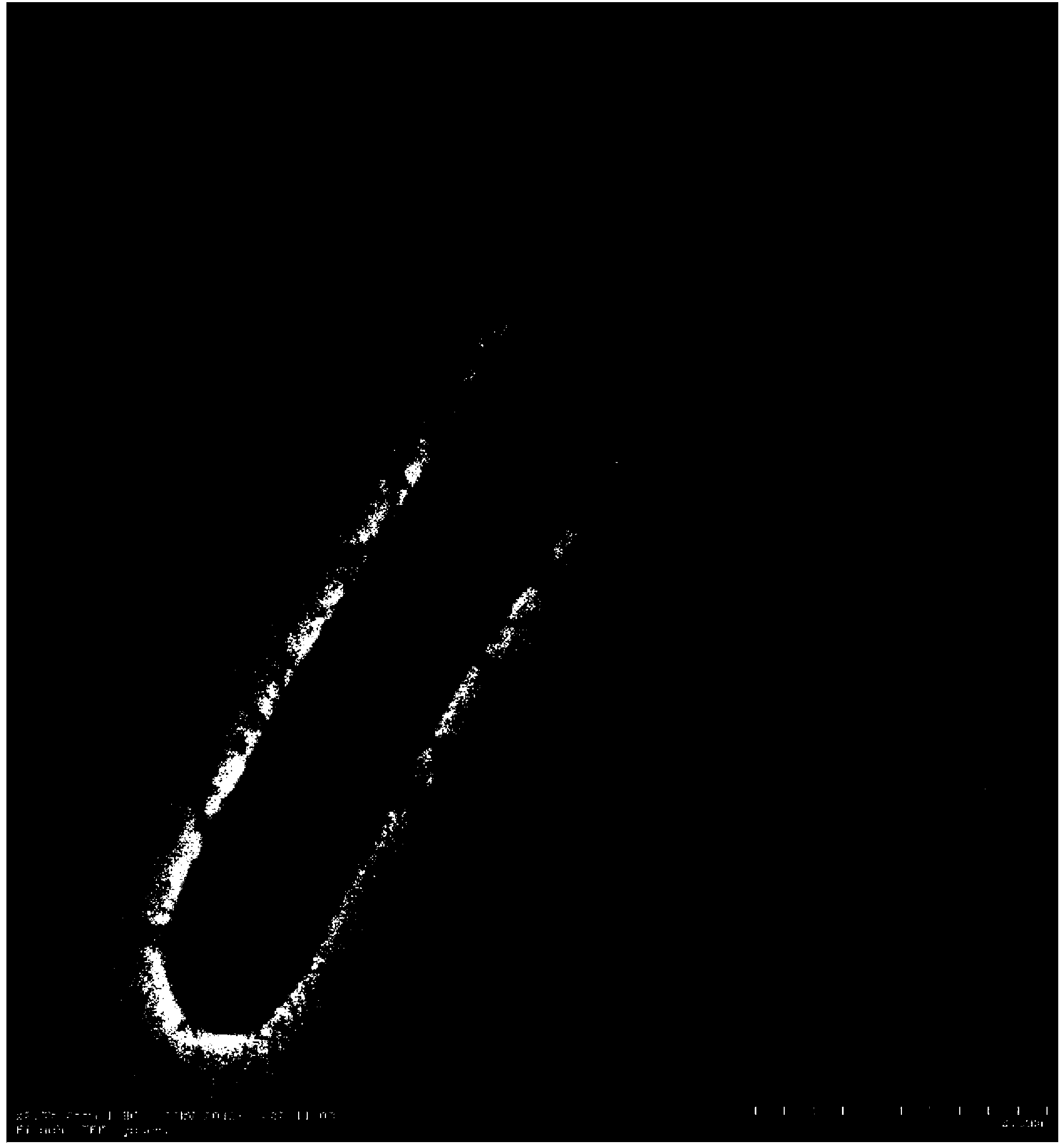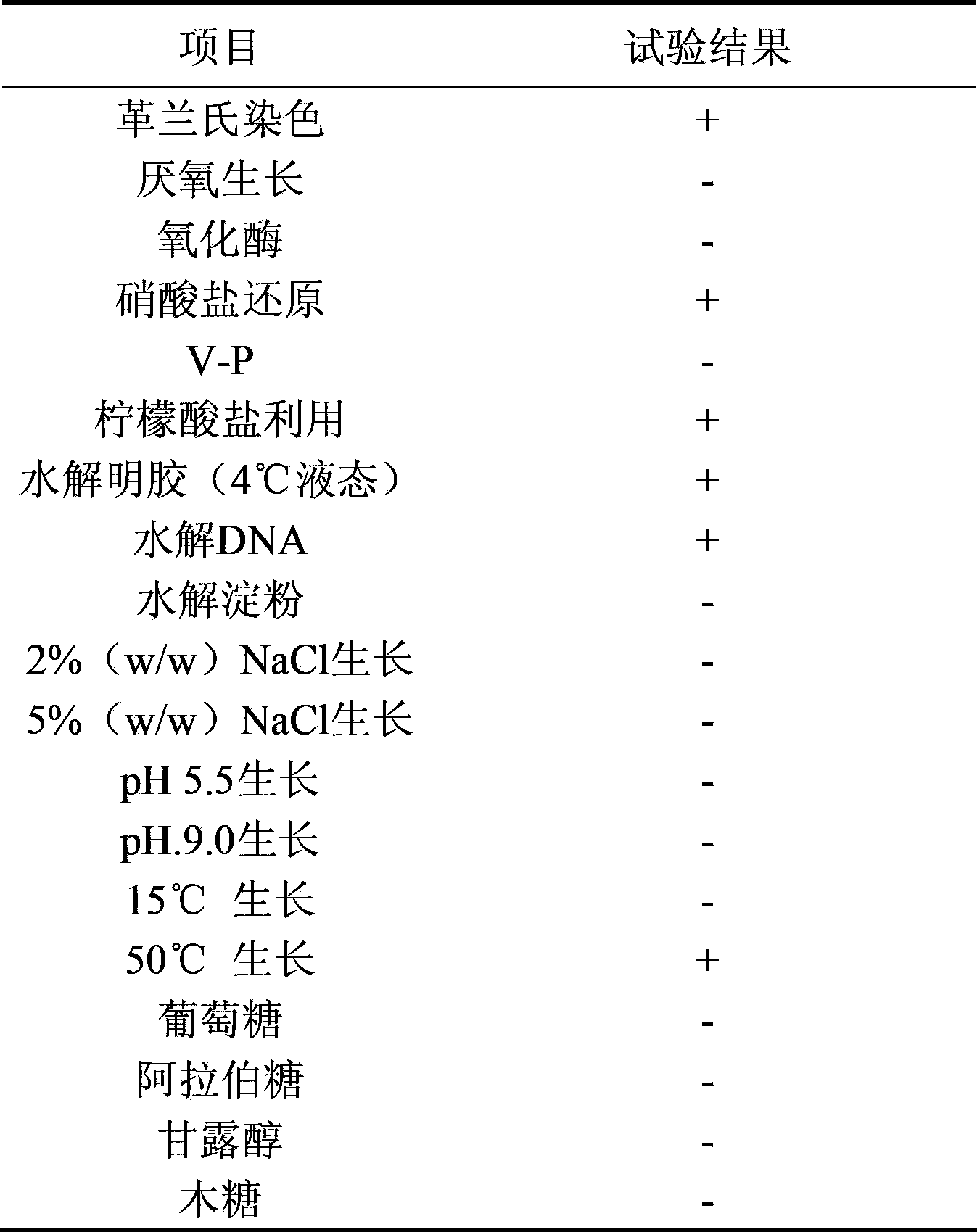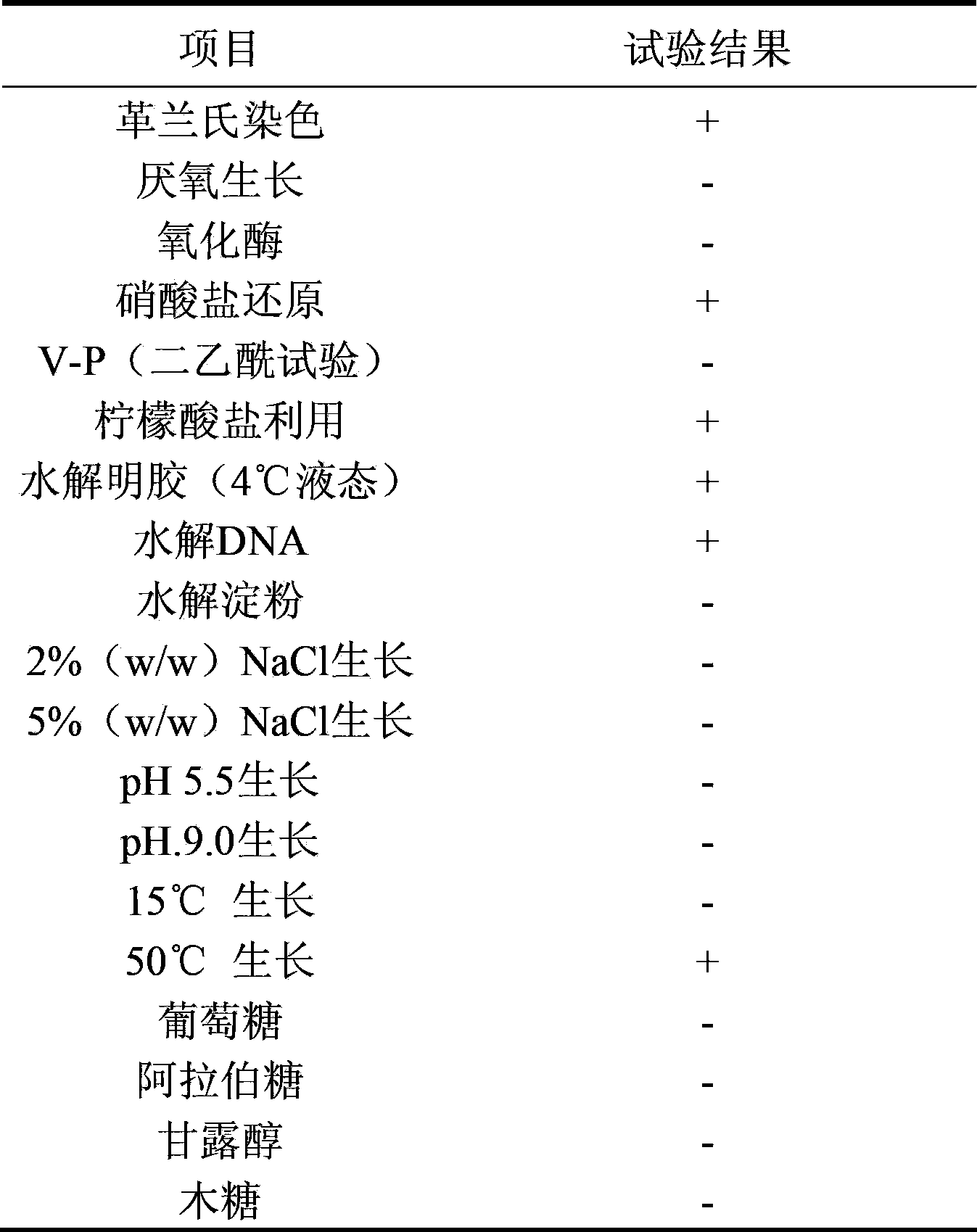Brevibacillus borstelensis strain having capability of degrading thioanisole and application thereof
A technology of Brevibacillus brevis and thioanisole is applied in the field of microorganisms, which can solve the problem that Brevibacillus potsdam is not found to degrade thioanisole and the like, and achieve the effect of efficiently degrading thioanisole
- Summary
- Abstract
- Description
- Claims
- Application Information
AI Technical Summary
Problems solved by technology
Method used
Image
Examples
Embodiment 1
[0021] The Brevibacillus Potsdamer strain capable of degrading sulfide anisole in the present invention is obtained by separating and purifying the bottom mud of a certain river in Guangzhou City, Guangdong Province. Its separation and purification method is as follows: the acclimatization medium used is inorganic salt medium (contain the following components in every liter of inorganic salt medium: K 2 HPO 4 ·3H 2 O 1.2g, KH 2 PO 4 1.2g, NH 4 Cl 0.4g, MgSO 4 ·7H 2 O 0.2g, FeSO 4 ·7H 2 O 0.01g, CaCl 2 2H 2 O 0.2g, MnSO 4 4H 2 O 0.2g, CuSO 4 2H 2 O 0.01g, ZnSO 4 ·7H 2 O 0.2g, CoCl 2 ·6H 2 O 0.09g, Na 2 MoO 4 2H 2 O 0.12g, H 3 BO 3 0.006g). First, add 3 g of sludge to the inorganic salt medium containing 10 mg / L sulfide anisole, and after acclimatization for 7 days at 37°C, transfer it into the inorganic salt medium containing 20 mg / L sulfide anisole at an inoculum size of 5% by volume, and then acclimate For one week, gradually increase the concentration...
Embodiment 2
[0055] The Brevibacillus Potsdam GIGAN1 screened by the present invention has better degradation ability to sulfide anisole:
[0056] Weigh K 2 HPO 4 ·3H 2 O 1.2g, KH 2 PO 4 1.2g, NH 4 Cl 0.4g, MgSO 4 ·7H 2 O 0.2g, FeSO 4 ·7H 2 O 0.01g, CaCl 2 2H 2 O 0.2g, MnSO 4 4H 2 O 0.2g, CuSO 4 2H 2 O 0.01g, ZnSO 4 ·7H 2 O 0.2g, CoCl 2 ·6H 2 O 0.09g, Na 2 MoO 4 2H2O 0.12g, H 3 BO 3 0.0.06g, then dilute to 1L with deionized water, pack 100ml / bottle into 250ml shaker flasks, sterilize at 121°C for 30min, take it out, add thioanisole and thioanisole under sterile conditions The concentration of ether is 2mg / L, 4mg / L, 8mg / L, 16mg / L, 24mg / L in turn. Inoculate the GIGAN1 strain preserved on the slant (the slant medium is beef extract peptone medium) into the beef extract peptone medium for culture, and activate the bacteria in a shaker at 30°C and 220r / min for 15h, with a volume percentage of 5% The amount of inoculum was inserted into the inorganic salt medium containi...
PUM
| Property | Measurement | Unit |
|---|---|---|
| Diameter | aaaaa | aaaaa |
Abstract
Description
Claims
Application Information
 Login to View More
Login to View More - R&D
- Intellectual Property
- Life Sciences
- Materials
- Tech Scout
- Unparalleled Data Quality
- Higher Quality Content
- 60% Fewer Hallucinations
Browse by: Latest US Patents, China's latest patents, Technical Efficacy Thesaurus, Application Domain, Technology Topic, Popular Technical Reports.
© 2025 PatSnap. All rights reserved.Legal|Privacy policy|Modern Slavery Act Transparency Statement|Sitemap|About US| Contact US: help@patsnap.com



